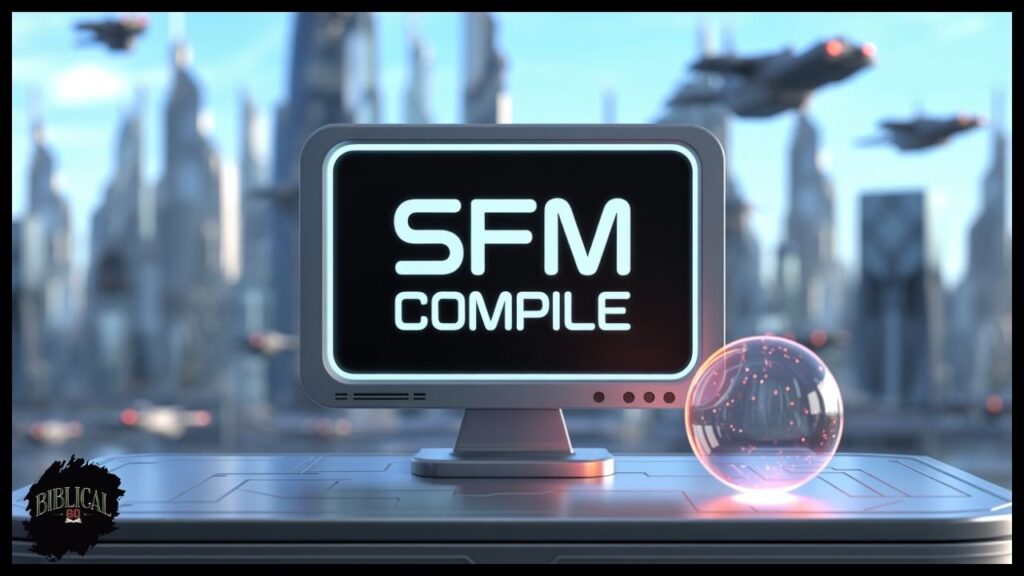
Introduction SFM Compile
SFM Compile or Source Filmmaker, is a powerful tool developed by Valve that allows users to create animated films using the Source game engine. One of the key features of using SFM is the ability to compile projects. The term “SFM compile” refers to the process of rendering the final version of an animation or scene from the project timeline. This compiled version is typically exported as a video file that can be shared or published. Compiling in SFM Compile is an essential step in the animation pipeline, transforming editable timeline sequences into finalized cinematic outputs. Understanding how to properly compile in SFM Compile is crucial for creators who want to achieve the best possible quality and performance in their final product.
Understanding the Purpose of Compiling in SFM
When working in SFM Compile users build scenes using assets, models, lights, and animations. These are all manipulated in real-time within the editor. However, the live preview in the editor does not reflect the final quality of the scene. This is where compiling comes in. Compiling renders each frame of the animation according to the selected settings, lighting, and effects. It ensures that all visual details, motion blur, depth of field, and other post-processing elements are applied accurately. Without compiling, users only see an approximation of their work, and any attempt to showcase the animation without this step would result in a lower-quality output. The compiling process converts this editable scene into a professional-grade video, suitable for platforms like YouTube, Vimeo, or film festivals.
Preparing Your Project Before Compilation
Before compiling a project in SFM Compile it’s important to make sure everything is ready. This includes checking the timeline for any unfinished animations, verifying that models are correctly placed, ensuring lighting is optimized, and confirming that the camera work is polished. SFM Compile allows users to add multiple cameras to a scene, and the selected active camera is what the compiler will use. Users should also check for missing textures, improperly loaded assets, or any timeline errors. Rendering a scene without addressing these issues can result in wasted time and low-quality output. Additionally, it is a good idea to save and backup your project before compiling, as rendering can be resource-intensive and might crash on lower-end machines.
Choosing the Right Compile Settings
 When compiling in SFM Compile users can choose from several settings that impact the quality and performance of the render. The main compile options include resolution, frame rate, anti-aliasing, depth of field, motion blur, and sampling quality. Higher settings result in better visual quality but also significantly longer render times. For instance, rendering a 1080p video at 60 frames per second with high anti-aliasing and lighting can take several hours, depending on the length of the animation and the computer’s capabilities. Users must balance quality and render time based on their hardware and project needs. It is often helpful to test render short sequences using different settings to find the optimal configuration before rendering the full project.
When compiling in SFM Compile users can choose from several settings that impact the quality and performance of the render. The main compile options include resolution, frame rate, anti-aliasing, depth of field, motion blur, and sampling quality. Higher settings result in better visual quality but also significantly longer render times. For instance, rendering a 1080p video at 60 frames per second with high anti-aliasing and lighting can take several hours, depending on the length of the animation and the computer’s capabilities. Users must balance quality and render time based on their hardware and project needs. It is often helpful to test render short sequences using different settings to find the optimal configuration before rendering the full project.
Understanding the Compilation Formats in SFM
SFM Compile allows users to export their compiled animations in various formats. The most common method is to export the sequence as a .TGA image sequence, which is later compiled into a video using external software like Adobe Premiere Pro, Vegas Pro, or VirtualDub. This method ensures the highest quality and allows for better control during the editing phase. Alternatively, users can export directly to AVI from within SFM, which is faster but may result in lower-quality output and larger file sizes. Some users also prefer rendering in image sequences to prevent data loss if a crash occurs, as individual frames can be recovered or re-rendered without starting over from scratch. Choosing the right format depends on the user’s workflow and post-production plans.
Tips for Efficient SFM Compilation
Compiling in SFM Compile can be time-consuming, so it helps to follow best practices for efficiency. One tip is to close all other applications during compilation to free up system resources. Another is to reduce the rendering resolution during test runs before committing to a full-quality render. Animators can also break up long projects into smaller segments and compile them individually, then stitch them together in editing software. This reduces the risk of crashes and makes troubleshooting easier. Additionally, keeping the timeline clean and organized, using only necessary models and lights, and optimizing the scene’s complexity can greatly improve compile times. These habits can save hours of rendering and frustration.
Common Errors During Compilation and How to Fix Them
During the compilation process, users may encounter various errors. One common issue is the program crashing or freezing during render. This can happen due to insufficient RAM or CPU overload. Reducing render settings or breaking the timeline into parts can help. Another issue is missing textures or black screens in the final render. This usually indicates broken asset paths or corrupted models. Ensuring all content is properly loaded before compilation is crucial. Users might also find their audio out of sync or missing entirely, which requires checking the timeline’s audio tracks and confirming they are rendered separately if necessary. Understanding these common problems allows animators to prevent them and ensure a smooth compiling experience.
The Role of the Work Camera vs. Render Camera
In SFM Compile there are two types of cameras: the work camera and the render camera. The work camera is used during editing and does not affect the final output. The render camera, also known as the scene camera, is what gets rendered during compilation. Many beginners mistakenly leave the work camera active, resulting in poor or unintended framing in the final video. Always ensure the correct render camera is selected before compiling. Users can set keyframes on the camera to create dynamic shots, such as pans, zooms, and transitions, which all get reflected in the final compiled render. Proper use of the render camera adds cinematic quality and professional polish to the animation.
Post-Compilation Workflow
After compiling the project in SFM Compile there’s often a need for post-production. If the project was rendered as an image sequence, the next step is to import these frames into a video editor and assemble them into a video file. At this stage, users can add sound effects, background music, voiceovers, and visual effects that may be more easily applied outside of SFM. Color correction, transitions, and subtitles can also be added during post-production. Once everything is finalized, the video can be exported in a widely compatible format like MP4, ensuring good balance between quality and file size. Sharing on platforms like YouTube or social media often requires compressing the video, so it’s best to keep a high-quality master copy for archival or distribution purposes.
Conclusion
SFM Compile is a critical stage in the Source Filmmaker animation workflow. It transforms raw animation timelines into polished video files ready for presentation and sharing. While the process can be technically demanding and time-consuming, understanding how to prepare scenes, choose optimal settings, and handle common errors helps animators achieve professional results. Whether you’re a hobbyist making fun animations or a serious filmmaker working on complex projects, mastering the compile process in SFM Compile is essential for delivering high-quality content. By taking advantage of the full power of SFM Compile rendering capabilities and integrating an efficient workflow, creators can bring their visions to life with clarity, detail, and cinematic flair.
You Many Also Read: LogicalShout News


